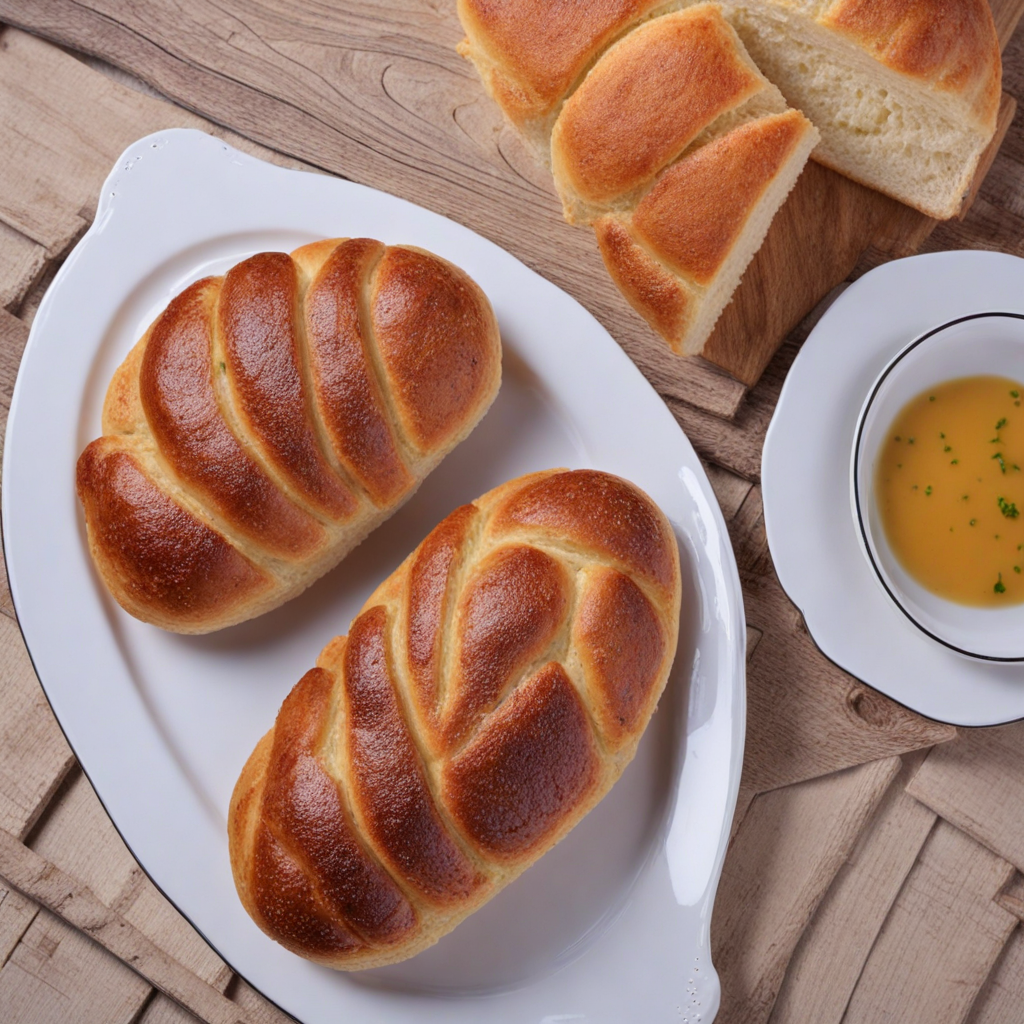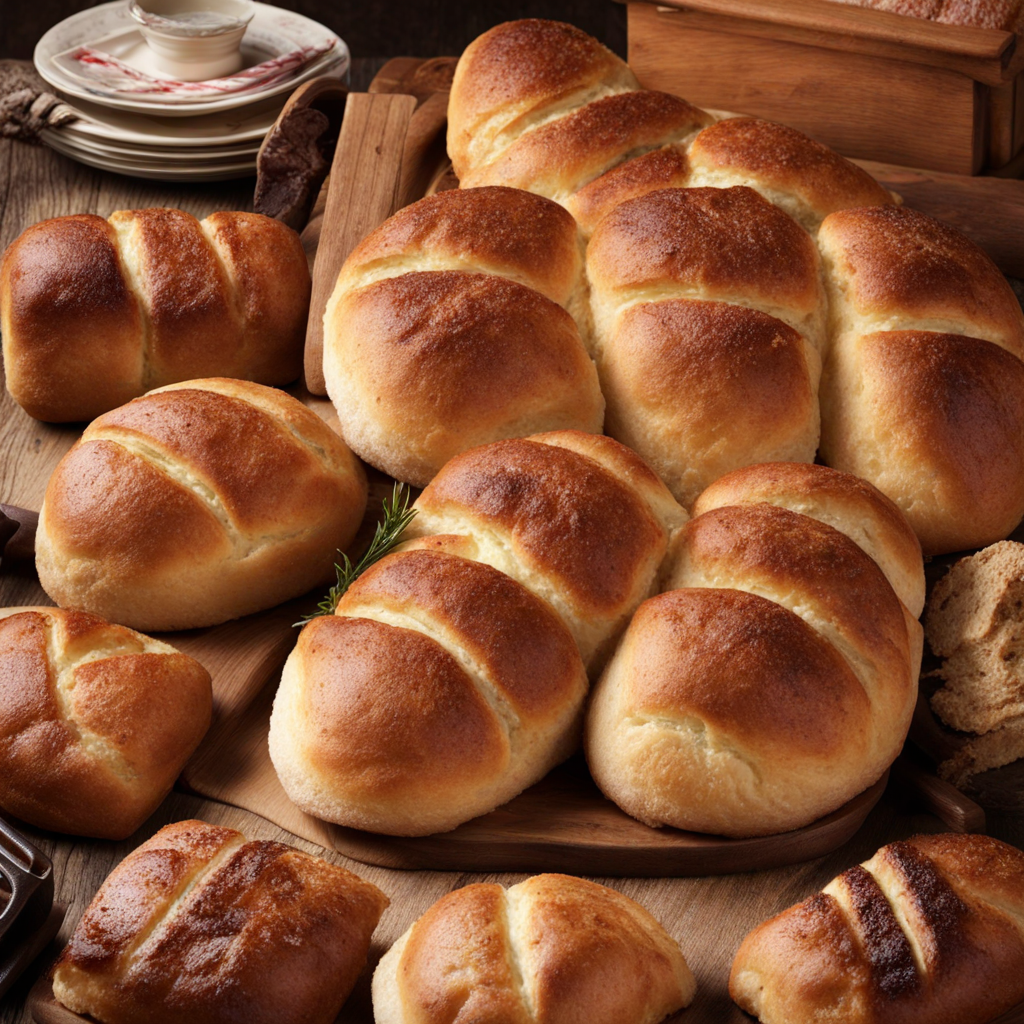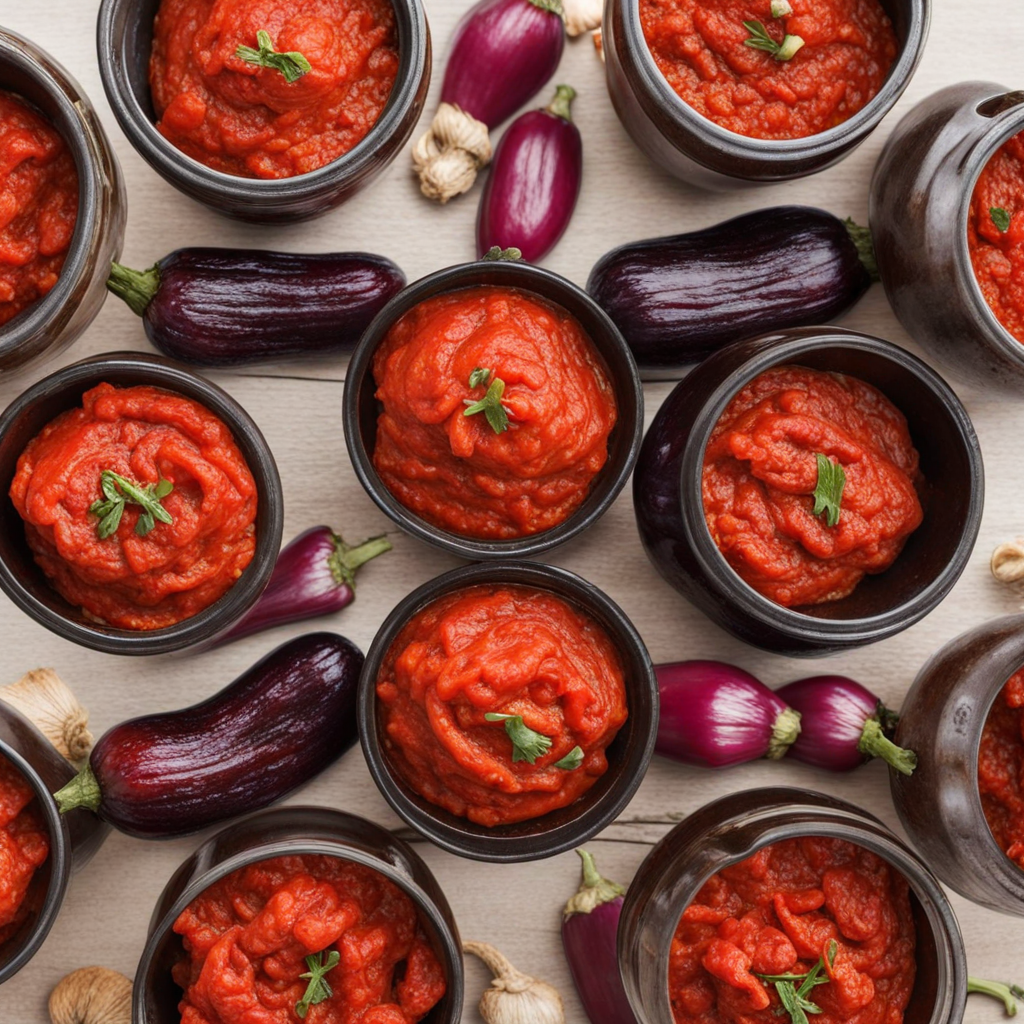Lepinja
Lepinja is a traditional Serbian flatbread that embodies the essence of rustic Balkan cuisine. Made primarily from flour, water, salt, and yeast, its simple ingredients come together to create a dough that is skillfully hand-shaped and baked to perfection. The bread is characterized by its soft and fluffy interior, with a slightly crisp outer crust that adds a delightful texture. Lepinja is versatile and can be enjoyed on its own or as a vehicle for a variety of fillings, making it an essential staple in Serbian households. Often served warm and fresh from the oven, Lepinja is commonly paired with grilled meats, particularly cevapi, which are small, skinless sausages made from minced meat. The fluffy bread acts as a perfect accompaniment, soaking up the juices and flavors of the grilled meat, while also providing a satisfying contrast in texture. It can also be used to wrap around savory fillings such as cheese, eggs, or vegetables, allowing diners to experience a burst of flavor with every bite. The aroma of freshly baked Lepinja wafts through Serbian kitchens and markets, inviting anyone nearby to indulge in its warm embrace. Its cultural significance goes beyond mere sustenance; Lepinja is often enjoyed during gatherings and celebrations, bringing people together around the table. For those seeking to explore new culinary horizons, this delectable bread offers an authentic taste of Serbia, celebrating the region's rich gastronomic heritage and the simple joys of homemade food.
How It Became This Dish
The History of Лепиња: A Serbian Culinary Treasure Лепиња (Lepinja) is a traditional Serbian flatbread that embodies not just a staple in the diet of many, but also a vessel of cultural heritage and communal identity. To understand the significance of lepinja, we must delve into its origins, its evolution through time, and its role in contemporary Serbian cuisine. #### Origins: A Journey Through Time The history of lepinja can be traced back to the ancient civilizations of the Balkans. Flatbreads have been a fundamental component of diets across various cultures for millennia, and the region that is now Serbia has seen the influence of numerous peoples and traditions. Archaeological findings suggest that flatbreads were made by the prehistoric inhabitants of the Balkans using simple techniques, grinding grains and baking them on hot stones or in clay ovens. With the arrival of the Slavs in the 6th century, the culinary practices of the region began to evolve. The Slavs brought with them their agricultural practices, which included the cultivation of wheat, barley, and corn. These grains became staples in the diet, paving the way for various types of bread, including lepinja. The name "lepinja" itself is derived from the Slavic word "lep", meaning “smooth” or “flat,” which aptly describes its shape and texture. #### Cultural Significance: A Symbol of Togetherness Lepinja is more than just a food item; it is a symbol of hospitality and communal bonds within Serbian culture. Historically, lepinja has been associated with family gatherings, celebrations, and religious occasions. It is often served during festive meals, particularly during Slava—the Serbian Orthodox tradition of celebrating a family's patron saint. At these gatherings, lepinja is typically accompanied by various meats, cheeses, and traditional sides, enhancing the communal experience. In everyday life, lepinja serves a practical purpose as well. It is versatile and can be used as a wrap for various fillings, such as grilled meats, vegetables, and even stews. This adaptability makes it a beloved choice for both casual meals and more elaborate feasts. In rural communities, where agriculture is a way of life, lepinja is often baked in communal ovens, reinforcing social ties among neighbors and families. #### Development Over Time: From Tradition to Modernity As Serbia underwent various political, social, and economic changes, so too did the preparation and consumption of lepinja. During the Ottoman Empire's rule in the Balkans, which lasted several centuries, culinary exchange flourished. The influence of Turkish cuisine introduced new flavors and techniques to the region, resulting in a fusion that enriched the traditional recipes for lepinja. This period saw the introduction of various spices and fillings, reflecting the diverse cultural tapestry of the empire. The 20th century brought significant challenges due to the tumultuous history of the Balkans, including wars and political upheavals. Despite these difficulties, lepinja remained a staple in the Serbian diet, adapting to the changes in availability of ingredients and culinary practices. The industrialization of food production led to the rise of commercially produced bread, but many families continued to value homemade lepinja, often passed down through generations as a cherished family recipe. In recent decades, with globalization and the rise of culinary tourism, Serbian cuisine—including lepinja—has gained recognition beyond its borders. Food enthusiasts and chefs have begun to explore traditional recipes, giving rise to a new appreciation for lepinja and its cultural significance. Restaurants in Serbia and abroad have adopted lepinja into their menus, often serving it alongside grilled meats, kebabs, or as part of mezze platters, showcasing its versatility to a broader audience. #### Contemporary Relevance: A Culinary Revival Today, lepinja is experiencing a renaissance as chefs and home cooks alike seek to reconnect with traditional culinary practices. In urban areas, artisanal bakeries have emerged, dedicated to reviving the authentic preparation methods of lepinja. These establishments often emphasize the use of high-quality, locally-sourced ingredients, such as organic flour and natural yeast, to create a product that honors the rich heritage of this beloved bread. Moreover, the rise of social media has facilitated a resurgence of interest in traditional Serbian recipes, with platforms like Instagram and TikTok showcasing the beauty of homemade lepinja. Cookbooks and blogs dedicated to Balkan cuisine have also played a role in preserving the recipes and techniques that define this flatbread, ensuring that future generations can continue to enjoy and appreciate it. Lepinja is not just a food item; it is a canvas for creativity in the kitchen. Contemporary interpretations often include variations infused with herbs, spices, or even cheeses, reflecting the ongoing evolution of Serbian culinary traditions. Furthermore, the gluten-free trend has prompted innovation, with some bakers experimenting with alternative flours, allowing those with dietary restrictions to partake in the enjoyment of lepinja. #### Conclusion: A Legacy of Flavor and Identity In conclusion, lepinja is a quintessential element of Serbian culture, steeped in history, tradition, and communal significance. Its journey from ancient flatbreads to a modern culinary staple illustrates the resilience and adaptability of Serbian cuisine. As it continues to evolve while honoring its roots, lepinja stands as a testament to the power of food in fostering connections, preserving heritage, and celebrating cultural identity. Whether enjoyed at a family gathering, as part of a festive meal, or savored in a trendy urban café, lepinja carries with it the stories of generations past and present. It invites us not only to taste its delightful flavors but also to appreciate the rich cultural tapestry that it represents—a true culinary treasure of Serbia.
You may like
Discover local flavors from Serbia







